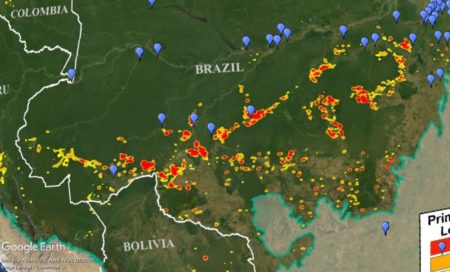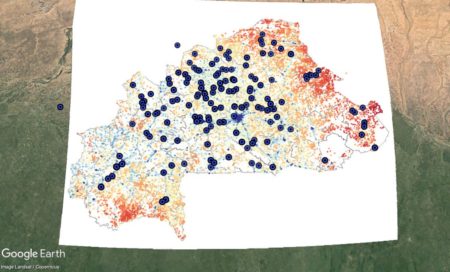- Triangulation supports agricultural spread of the Transeurasian languages. People speaking the precursor of Japonic, Koreanic, Tungusic, Mongolic and Turkic languages started out around the West Liao River and then spread with their Panicum millet farming, mixing with other populations and picking up rice and wheat along the way.
- Artificial selection in the expansion of rice cultivation. They managed to get to Hokkaido with that rice because of a couple of genes. Rice genes, that is.
- Pip shape echoes grapevine domestication history. If they had carried grapevines, we’d be able to say which varieties.
- Shaping the biology of citrus: I. Genomic determinants of evolution. They maybe had a role in citrus domestication, but a lot of the hard work was done by the prior adaptive radiation of the group. The citrus group, that is. Quick summary of both papers here if you can get access to it.
- Yak Domestication: A Review of Linguistic, Archaeological, and Genetic Evidence. They weren’t involved in yak domestication, though, I don’t think.
- The Evolutionary History of Wild, Domesticated, and Feral Brassica oleracea (Brassicaceae). Nor that of Brassica oleracea, whose closest wild relative turns out to be half a world away on Crete.
- Coffee: Genetic Diversity, Erosion, Conservation, and Utilization. Ok, stay with me here. Brassica oleracea is related to Brassica carinata, which originated in Ethiopia, which is also where arabica coffee comes from.
- Surveying Grassland Islands: the genetics and performance of Appalachian switchgrass (Panicum virgatum L.) collections. If you can find a close connection between coffee and switchgrass you get a prize. Ah no wait, there are 2 ploidy levels, just like in Coffea. Yeah, I know it’s tenuous.
- Agrobiodiversity-Oriented Food Systems between Public Policies and Private Action: A Socio-Ecological Model for Sustainable Territorial Development. These guys really know their onions. And think they can use their conservation as a spur to local development. In Italy, but who’s to say it couldn’t work in Ethiopia as well.
- Putting diverse farming households’ preferences and needs at the centre of seed system development. Imagine.
Brainfood: Healthy diets, Healthy foods, Nature dependence, Farm size, Climate-smart ag, Monitoring diversity, Pollinators double, Intensification, WTP, Mexican booze
- Actions in global nutrition initiatives to promote sustainable healthy diets. Focus more on food choice.
- Food Compass is a nutrient profiling system using expanded characteristics for assessing healthfulness of foods. I suppose this might help with making good choices. Maybe.
- Nature-dependent people: Mapping human direct use of nature for basic needs across the tropics. 1.2 billion people in tropical countries are kinda forced to choose nature.
- Small farms and development in sub-Saharan Africa: Farming for food, for income or for lack of better options? Not really a choice: it depends on population density, farm size, market access and agroecological potential.
- The future of farming: Who will produce our food? Whoever chooses to run small, diverse farms. Maybe.
- Building a framework towards climate-smart agriculture in the Yangambi landscape, Democratic Republic of Congo (DRC). Not much choice for these farmers.
- Varietal Threat Index for Monitoring Crop Diversity on Farms in Five Agro-Ecological Regions in India. How to measure the diversity farmers choose to grow, and lose.
- Widespread vulnerability of flowering plant seed production to pollinator declines. A third of flowering plants have no choice and would not set seeds without pollinators…
- Honeybee pollination benefits could inform solar park business cases, planning decisions and environmental sustainability targets. …so choose to put beehives in solar parks.
- Agricultural intensification erodes taxonomic and functional diversity in Mediterranean olive groves by filtering out rare species. Choose management practices wisely to maintain biodiversity in olive groves.
- Policy implications of willingness to pay for sustainable development of a world agricultural heritage site: The role of stakeholders’ sustainable intelligence, support, and behavioral intention. Why people might choose to pay for biodiversity-friendly management practices and crop diversity.
- Traditional Fermented Beverages of Mexico: A Biocultural Unseen Foodscape. So much choice…
Talkin’ ’bout my generosion
What’s that you say? You don’t have time to slog through dozens of pages of text, diagrams, tables and supplementary materials on genetic erosion? Ok, then, have you got time to listen to lead author Colin Khoury talk about the paper in question for an hour or so? Of course you do. This is just the latest of a great series of webinar, see all the others on the Genebank Platform page.
Questioning maps
As regular readers know all too well, I can’t resist a map mashup. So when I saw the latest data on deforestation in the Amazon, I fired up MapWarper and GoogleEarth and got to work.
And here’s a look at how recent deforestation in Brazil relates to the localities of past cassava collecting, at least as far as Genesys knows about it.
Now, I don’t know in what way deforestation (and associated disruptions) relates to loss of cassava diversity, but there’s a chance that it might. Could make an interesting PhD project for someone.
Anyway, encouraged by my pretty result, and remembering that I wanted to do something with some shiny new maps I had heard about, I next mashed up sorghum accessions and poverty in Burkina Faso. Here’s what I got.
What’s going on? Why are there relatively fewer sorghum accessions where poverty is higher (more red)? Are those places just harder to reach? Or do people there really grow less sorghum.
Again, I don’t know. But I think it would be interesting to find out.
All speculation welcome in the comments.
Brainfood: RICA, AEGIS, CWR, Agrosavia, DSI, CRISPR, Tradition, SNS, Stability, Birds, Sparing, Genetic erosion
- RICA: A rice crop calendar for Asia based on MODIS multi year data. RiceAtlas validated. Still trying to figure out how to mash it up with genebank accession locality data though. Any GIS geniuses out there to help me?
- AEGIS, the Virtual European Genebank: Why It Is Such a Good Idea, Why It Is Not Working and How It Could Be Improved. Certify genebanks, that’s how.
- Reap the crop wild relatives for breeding future crops. Needs good data and certified genebanks. Plus gene editing.
- Opportunities and Challenges to Improve a Public Research Program in Plant Breeding and Enhance Underutilized Plant Genetic Resources in the Tropics. Needs better social networking. Plus better data and certified genebanks, presumably.
- From seed to sequence: Dematerialization and the battle to (re)define genetic resources. Ah yes, data.
- Current Advancements and Limitations of Gene Editing in Orphan Crops. Ah yes, gene editing.
- Revitalizing Traditional Agricultural Practices: Conscious Efforts to Create a More Satisfying Culture. Meanwhile, in Sweden…
- Sacred natural sites and biodiversity conservation: a systematic review. Of course sacred sites are good for biodiversity. But it’s always good to have the data.
- Global relationships between crop diversity and nutritional stability. Sacred sites are not enough, alas.
- Preserving local biodiversity through crop diversification. Crop diversity is even good for birds…
- Concentrating vs. spreading our footprint: how to meet humanity’s needs at least cost to nature. …but, overall intensification of agriculture coupled with sparing land for conservation (maybe even in sacred sites) is the best approach for wildlife. And humanity, for that matter. So, back to needing better data from certified genebanks, so we can get that intensification done, right?
- Quantifying the scale of genetic diversity extinction in the Anthropocene. Right!

